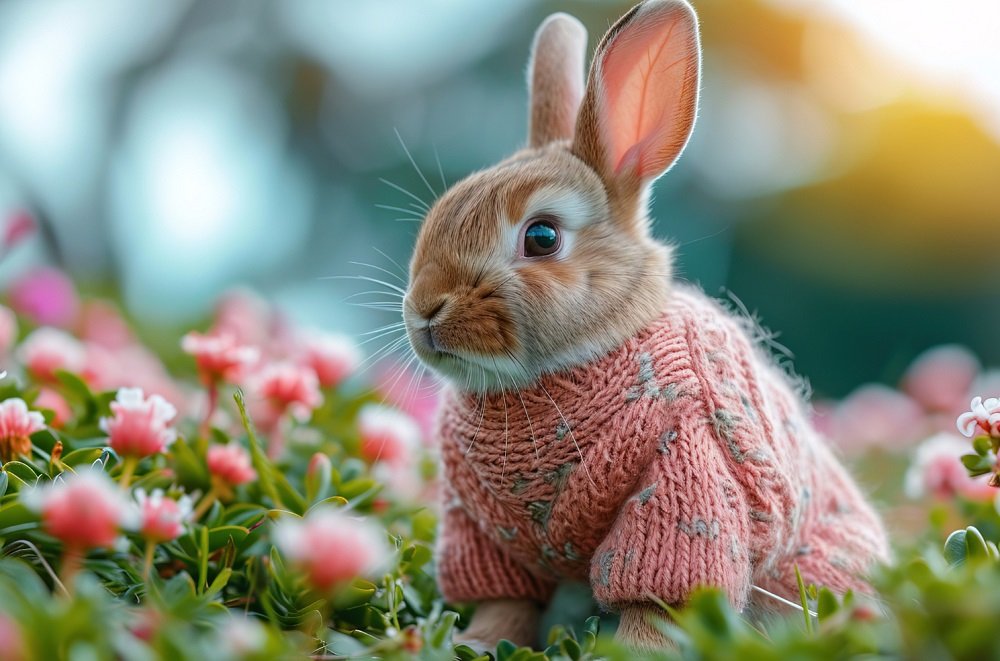Choosing the right companions for your furry friend is crucial for their well-being and happiness. When it comes to rabbits, the question of whether two male rabbits can live together can be a complex one. Understanding the dynamics and potential challenges of housing male rabbits can help you make an informed decision that ensures a harmonious and safe environment for your pets.
Can You Have Two Male Rabbits Together?
While it is possible for two male rabbits to live together, it’s generally not recommended. Male rabbits are naturally territorial and can exhibit aggressive behaviors towards each other, especially when they reach sexual maturity.
Understanding Rabbit Behavior
Male rabbits have strong instincts to establish dominance and protect their territory. Introducing two males without proper precautions can lead to fights, injuries, and even death.
Factors to Consider
Several factors influence the success of housing two male rabbits together:
- Age: Younger rabbits are more likely to bond successfully.
- Personality: Some rabbits are naturally more tolerant and less aggressive than others.
- Spaying/Neutering: This significantly reduces aggression and territoriality.
- Space: A large, spacious enclosure is essential to minimize territorial disputes.
Can You Have Two Male Rabbits Together?
Bringing a new pet into your home is always exciting, and rabbits can make wonderful companions. However, before you welcome a fluffy friend into your family, it’s crucial to understand the complexities of rabbit social dynamics. One common question is whether you can have two male rabbits together. The answer, like many things in rabbit care, is nuanced and depends on several factors.
Understanding Rabbit Behavior
Rabbits are social animals, but their social structures are complex. They live in groups called colonies in the wild, with a dominant male leading the pack. However, these colonies are not always harmonious. Males, especially those not neutered, can be territorial and aggressive towards each other.
Neutering: The Key to Successful Bonding
Neutering is essential for successful cohabitation between male rabbits. Neutering significantly reduces testosterone levels, which are the primary drivers of aggression and territorial behavior. (See Also: Can Rabbits Die From Stress)
Benefits of Neutering
- Reduces aggression and fighting
- Decreases spraying and marking behavior
- Lowers the risk of certain health problems
- Improves overall temperament and bond
The Bonding Process
Even with neutered males, introducing them properly is crucial. Rushing the process can lead to stress and conflict. Here’s a general guideline for bonding two male rabbits:
Step 1: Scent Swapping
Begin by exchanging bedding or toys between the rabbits to allow them to get used to each other’s scent.
Step 2: Neutral Territory
Introduce the rabbits in a neutral area, not their usual cages. This helps prevent one rabbit from feeling territorial.
Step 3: Supervised Interactions
Start with short, supervised interactions, gradually increasing the time together as they become more comfortable.
Step 4: Patience and Observation
Be patient and observant. Watch for signs of aggression, such as thumping, growling, or chasing. If you see any of these signs, separate the rabbits immediately and try again later. (See Also: What Keeps Rabbits Away)
Signs of a Successful Bond
When rabbits bond successfully, you’ll see positive behaviors like:
- Grooming each other
- Eating near each other
- Sleeping close together
- Playing gently
Potential Challenges
Even with proper introductions, there’s always a chance that two male rabbits may not bond successfully. Some common challenges include:
- Age difference: Younger rabbits may be more difficult to bond with older rabbits.
- Personality clashes: Some rabbits simply don’t get along, no matter how hard you try.
- Lack of space: Rabbits need ample space to roam and establish their territory.
Recap
Deciding whether to house two male rabbits together is a significant decision. Neutering is essential for reducing aggression and increasing the chances of a successful bond. The bonding process takes time, patience, and careful observation. While challenges can arise, with proper care and attention, two male rabbits can live together harmoniously and enrich each other’s lives.
Frequently Asked Questions: Can You Have Two Male Rabbits Together?
Can male rabbits live together peacefully?
It’s generally not recommended to house two male rabbits together. Male rabbits are territorial and can become aggressive towards each other, especially as they mature. This can lead to fighting, injuries, and stress for both rabbits.
Are there exceptions to this rule?
There are rare exceptions where two male rabbits can live together successfully. This usually requires careful introductions, a spacious enclosure, and ample resources like food, water, and hiding places. However, even with these precautions, there’s still a high risk of aggression.
What are the signs of aggression in rabbits?
Signs of aggression can include thumping, growling, hissing, chasing, and biting. If you notice any of these behaviors, it’s important to separate the rabbits immediately. (See Also: Is Banana Good For Rabbits)
What should I do if my male rabbits are fighting?
If your male rabbits are fighting, separate them immediately and provide each rabbit with their own safe space. Do not try to intervene physically, as this could result in injury. Consult with a veterinarian or rabbit-savvy behaviorist for advice on how to manage the situation.
Is it better to have a bonded pair of male rabbits?
No, it’s generally not recommended to try to bond two male rabbits. Bonding can be a complex and challenging process, and the risks of aggression are too high. It’s safer and more humane to keep male rabbits separately.


